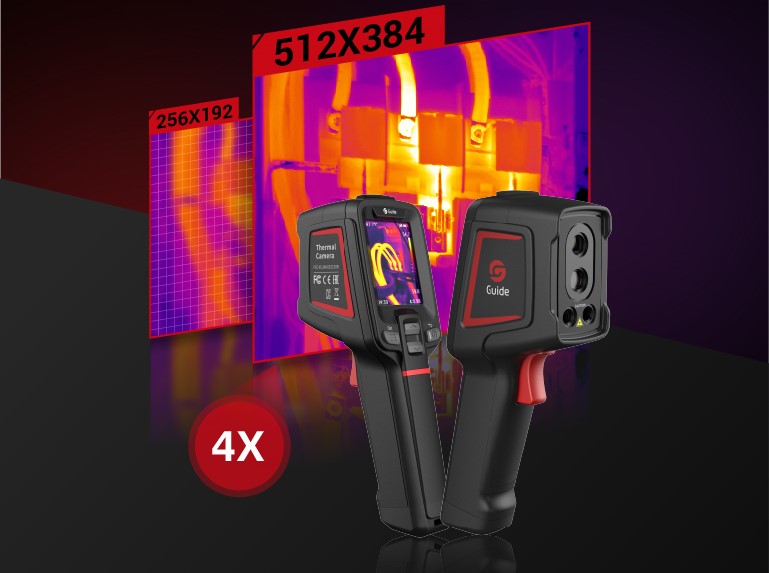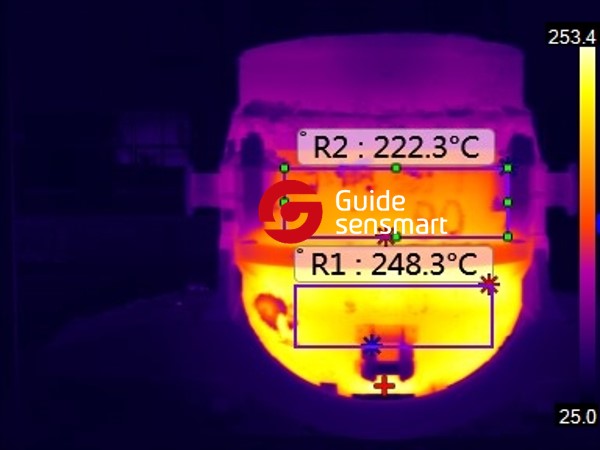In the last few years, HD thermal imaging cameras have transformed the experience of temperature differences in industries and of finding hidden issues. Guide Sensmart is a leading worldwide producer in this sector and has been at the forefront of redrawing boundaries in infrared vision using advanced thermal imaging solutions. With advances in sensor design and image algorithms, the HD thermal camera is now not just confined to the military or laboratory environment—it's a must-have for industrial inspections, surveillance, medicine, and intelligent products.
The Evolution of HD Thermal Imaging
Prior infrared cameras could only generate low-resolution, pixelated images that were adequate for overall thermal detection but too unspecific to be useful in analysis. The HD thermal imaging camera resolved that. By incorporating high-definition detectors and advanced image processing software, current systems are capable of providing thermal images of an unprecedented level of detail and accuracy. Such technologies enable users to track tiny temperature variations and infinitesimal thermal patterns, a significant advantage in predictive maintenance, electrical diagnostics, and quality inspection.
The essence of such innovations lies within the HD infrared imaging camera module—a compact, high-performance center that determines the extent of image quality. Guide Sensmart's modules combine high-sensitivity uncooled infrared detectors, high-optimization optical lenses, and smart image fusion technologies. It allows the camera to capture clear, high-contrast thermal images in total darkness or poor environments.
Core Technology That Promotes Performance
The performance of an HD thermal camera depends on three pillars of technology: detector sensitivity, image processing, and system integration.
1. Detectors of High Sensitivity
The latest uncooled VOx and microbolometer detectors are capable of higher thermal sensitivity and stability. This helps the HD infrared imaging camera module detect changes in temperature as low as 0.03°C, which makes it ideal for high-precision inspection.
2. Smart Image Processing
Guide Sensmart's advanced algorithms to edge-enhance detail, remove noise, and autocalibrate contrast. The result is an unblurred thermal image with temperature anomalies easily readable in a split second.
3. Modular Integration
The compact modular design of the HD thermal imaging camera makes it seamless to integrate into drones, handheld devices, and industrial automation systems. The resulting flexibility has spread its applications to various industries, ranging from energy management to security surveillance.
Applications Across Diverse Industries
The HD thermal camera has been used across diverse industries for its accuracy and reliability. In mechanical and electrical maintenance, engineers use cameras to detect overheating elements and prevent costly equipment failure. In the construction industry, they are used for revealing insulation leaks, water infiltration, and HVAC inefficiencies.
For law enforcement and security agencies, HD thermal imaging cameras provide unmatched surveillance performance in low-light or no-light conditions. In the veterinary and medical fields, thermal imaging is used to facilitate non-contact monitoring and diagnosis of animal health. Additionally, when embedded in smart systems, the HD infrared imaging camera module brings value to autonomous vehicles, AI-driven vision systems, and robotics by allowing machines to "see heat" where the human eye fails to see.
Guide Sensmart: Leading the Infrared Revolution
As the world's leading infrared technology company, Guide Sensmart is committed to R&D and mass production of HD infrared imaging camera modules and thermal integrated systems. Guide Sensmart's passion for innovation is embedded in each HD thermal camera, which comes equipped with smart functions such as automatic temperature measurement, real-time image fusion, and digital signal processing.
Guide Sensmart patented technology—Adaptive contrast enhancement and intelligent temperature measurement—Increase the quality of accuracy and efficiency. Company products have wide applications in power generation industries to firefighting, transport, and smart security industries, a testament to their flexibility and dependability across various operating conditions.
Future Trends in Infrared Imaging
In the next few years, the destiny of HD thermal imaging cameras will be miniaturization, integration with artificial intelligence, and more connectivity. As more pervasive becomes the use of Internet of Things (IoT), tiny HD infrared imaging camera modules will go into more and more varied devices, from handheld smartphones to autonomous robots. The modules will not only capture images of heat but also read and interpret data in real time using onboard artificial intelligence.
The evolution of HD thermal cameras isn't a question of improved image quality—it's about opening new avenues to safety, efficiency, and innovation. As visionaries such as Guide Sensmart continue to drive the relentless pursuit of technological innovation, the destiny of infrared vision will only improve, painting truer, wiser, and more powerful images into the hidden threads of heat that weave our world.













.svg)


.jpg)


